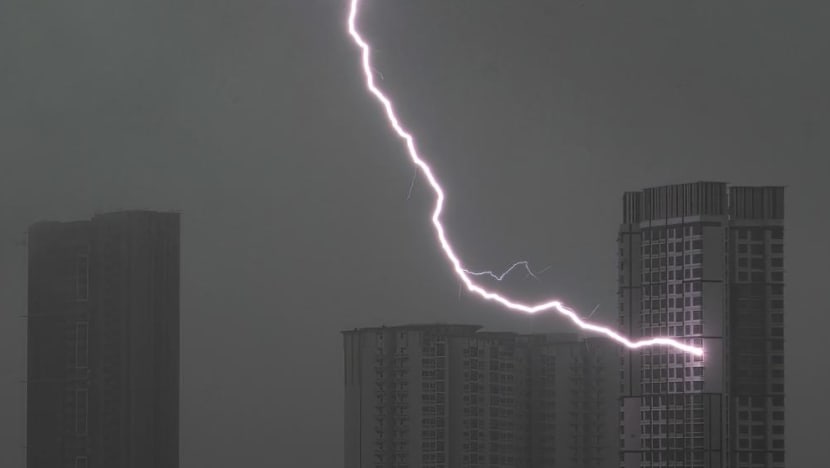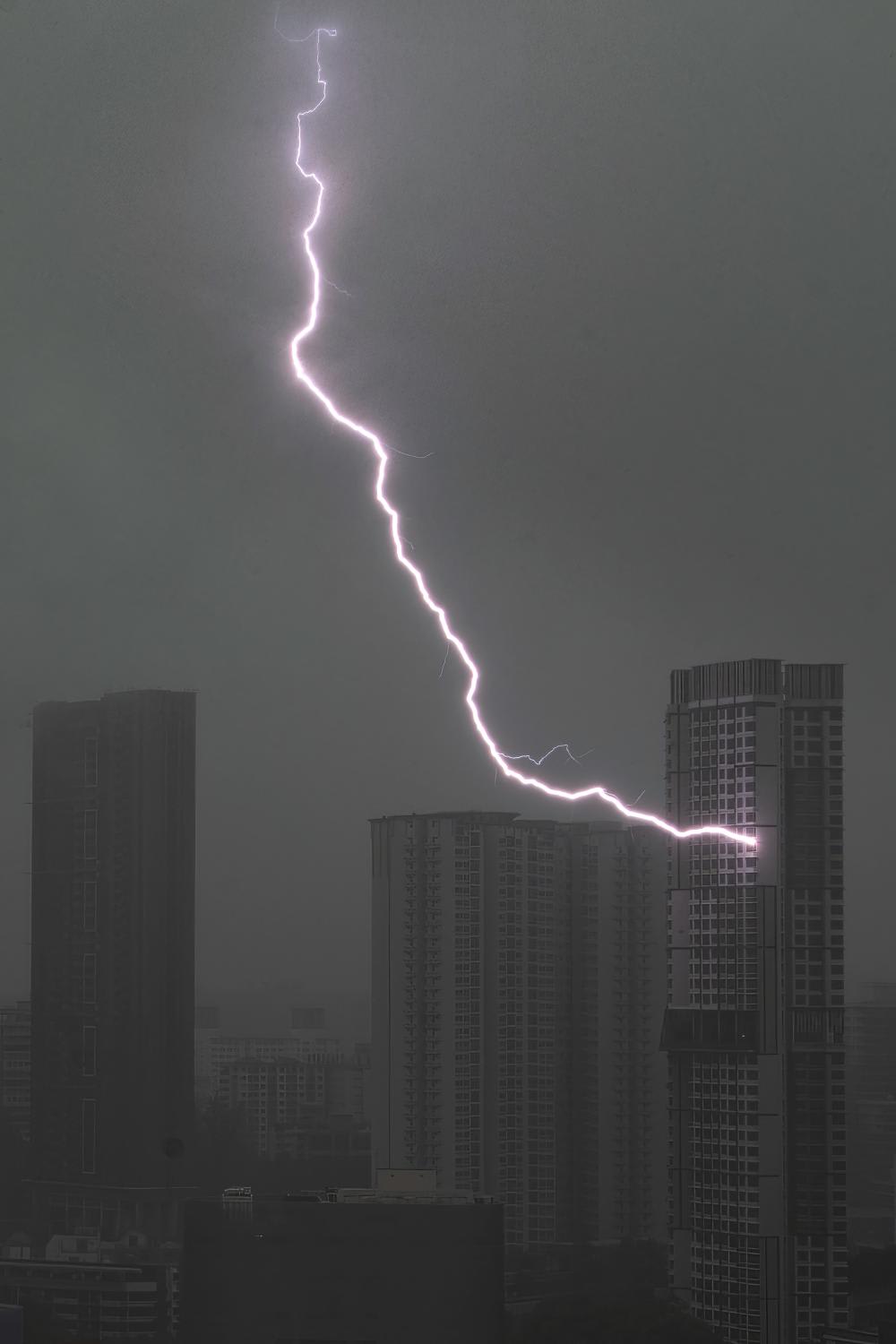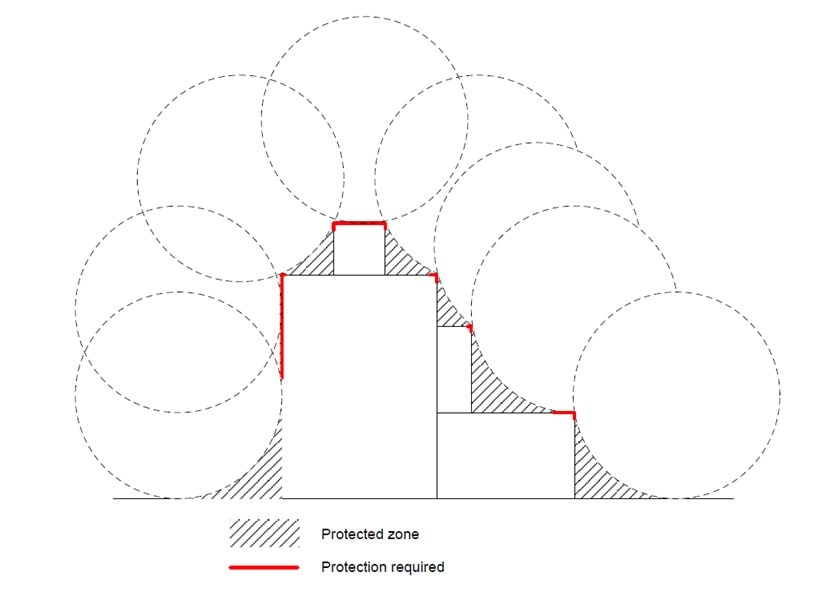Photo of lightning striking HDB block in Queenstown: How does it happen and are residents at risk?

Photographer Mak Wei Seng took the photo of a lightning bolt striking an HDB block in Strathmore Avenue at 2.55pm on Apr 23, 2022. (Photo: Mak Wei Seng)
SINGAPORE: An electrifying photo of lightning seemingly striking the side of an HDB block in Strathmore Avenue surfaced over the weekend, quickly going viral on social media.
It sparked questions about how a lightning bolt could hit at an angle at the upper part of a building, with some people expressing concern about the safety of the occupants and the block in the Queenstown area.
The photographer who captured the shot, Mak Wei Seng, told CNA that it was taken at 2.55pm on Saturday (Apr 23) from The Metropolitan Condominium at Alexandra View.
It was a stormy afternoon and amid the lightning strikes, Mr Mak readied his camera by his window.
"When I heard the first thunder, I quickly set up my camera and was lucky to get the shot," he said.
Mr Mak, who has been taking photos of lightning for about a year, said he captured the shot within 10 to 15 minutes from the time he set up his camera.
"A lot is about luck for lightning shots - basically your camera needs to point in the right direction; the rest is about having the right camera settings," he added.
"(I) was lucky ... Sometimes it could be hours and you get nothing. Sometimes your camera points west, but the actions happen in the south-west."

ROLLING SPHERE
According to lightning protection expert Professor Lock Kai Sang, Singapore has one of the highest lightning rates in the world.
"Lightning strikes at corners and edges of flat roofs and parapet walls of tall buildings are common even where LPS (lightning protection systems) are provided," he told CNA in response to queries.
Analysing the photograph taken by Mr Mak - who identified the block as 53 Strathmore Avenue - Prof Lock said that the lightning appeared to have struck around level 34 of the 43-storey building.
"HDB design document shows that (for the) 1st to 2nd storey, (the) typical height is 3.6m, and subsequent floor-to-floor height (is) 2.8m. The lightning strike point was estimated to be at a height of around 96m from the ground," said Prof Lock, who is from the Singapore Institute of Technology’s engineering cluster.
"Since the 'middle' of the building is taller than 45m, it is not unexpected that the upper part of the building walls could be struck by lightning," he added.
Prof Lock explained that engineers use what is called a "rolling sphere method" to determine a structure's lightning vulnerability.
In this method, a sphere of specified radius is imagined to be rolled across the ground towards the building, up the side, over the top of the building and down the other side to ground.
Those parts of the building touched by the sphere are at risk of being struck. Portions that are not touched are shielded or protected.
In the case of the photograph, the rolling sphere method shows that the upper part of the building could be struck by lightning from the side, he said.
He added too that the relatively exposed conditions of the Strathmore block could have been a factor, as lightning propagation would not be intercepted by other taller buildings around.
"For tall buildings, the rooftop and the side walls can be struck by lightning. Lightning protection must be installed on the roof and the top sides of the building," he said.

Emeritus Professor Liew Ah Choy, a lightning protection expert from the National University of Singapore’s department of electrical and computer engineering, added that not all lightning leader approach angles are vertical.
"Some descend from the cloud at an angle and can lead to strikes which bypass the roof lightning protection intercepting systems. This occurs predominantly with tall structures," he said.
Prof Lock added that lightning flashes are a random phenomenon.
"Some lightning flashes may zigzag towards the ground in a somewhat horizontal manner through the air, and in such cases, it is possible to hit the side of a tall building," he said. "In this case, the lightning current will terminate on the building structural steelwork and be discharged to the ground."
In terms of potential danger to the building, Emeritus Prof Liew said that in a building that is properly provided with a lightning protection system, damage to the building can be reduced to an acceptable level in accordance with the Class of Protection to which it is designed to.
"Together with (the) following of advisory precautions given, danger to occupants can be managed to acceptable levels," he added.
Damage to the facade of a building can, however, occur in the absence of or failure of the external lightning protection or lightning intercepting conductors.
As for the risk to residents, Prof Lock said there is no danger to residents who stay indoors during the lightning strike.
"Lightning flashes are not able to penetrate through the windows or the wall into the living space. They will be blocked by the concrete rebars bonded to the window frames," he explained.
Tanjong Pagar Town Council and HDB said in response to queries that they have not received any feedback about a lightning strike to the building.
"We have checked and there is no issue with the lightning protection system," said Tanjong Pagar Town Council.
















